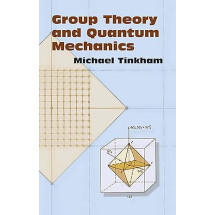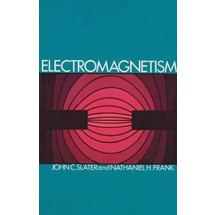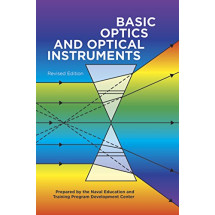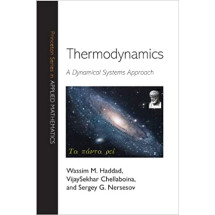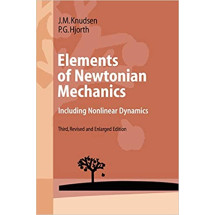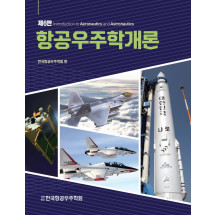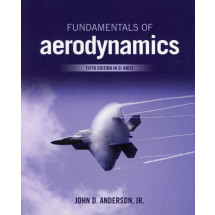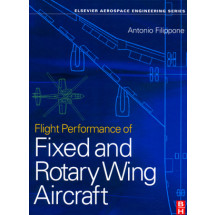Preface xv
1 Introduction 1
1.1 Data Science: Statistics, Probability, Calculus … Python (or Perl) and Linux 2
1.2 Informatics and Data Analytics 3
1.3 FSA-Based Signal Acquisition and Bioinformatics 4
1.4 Feature Extraction and Language Analytics 7
1.5 Feature Extraction and Gene Structure Identification 8
1.5.1 HMMs for Analysis of Information Encoding Molecules 11
1.5.2 HMMs for Cheminformatics and Generic Signal Analysis 11
1.6 Theoretical Foundations for Learning 13
1.7 Classification and Clustering 13
1.8 Search 14
1.9 Stochastic Sequential Analysis (SSA) Protocol (Deep Learning Without NNs) 15
1.9.1 Stochastic Carrier Wave (SCW) Analysis – Nanoscope Signal Analysis 18
1.9.2 Nanoscope Cheminformatics – A Case Study for Device “Smartening” 19
1.10 Deep Learning using Neural Nets 20
1.11 Mathematical Specifics and Computational Implementations 21
2 Probabilistic Reasoning and Bioinformatics 23
2.1 Python Shell Scripting 23
2.1.1 Sample Size Complications 33
2.2 Counting, the Enumeration Problem, and Statistics 34
2.3 From Counts to Frequencies to Probabilities 35
2.4 Identifying Emergent/Convergent Statistics and Anomalous Statistics 35
2.5 Statistics, Conditional Probability, and Bayes’ Rule 37
2.5.1 The Calculus of Conditional Probabilities: The Cox Derivation 37
2.5.2 Bayes’ Rule 38
2.5.3 Estimation Based on Maximal Conditional Probabilities 38
2.6 Emergent Distributions and Series 39
2.6.1 The Law of Large Numbers (LLN) 39
2.6.2 Distributions 39
2.6.3 Series 42
2.7 Exercises 42
3 Information Entropy and Statistical Measures 47
3.1 Shannon Entropy, Relative Entropy, Maxent, Mutual Information 48
3.1.1 The Khinchin Derivation 49
3.1.2 Maximum Entropy Principle 49
3.1.3 Relative Entropy and Its Uniqueness 51
3.1.4 Mutual Information 51
3.1.5 Information Measures Recap 52
3.2 Codon Discovery from Mutual Information Anomaly 58
3.3 ORF Discovery from Long-Tail Distribution Anomaly 66
3.3.1 Ab initio Learning with smORF’s, Holistic Modeling, and Bootstrap Learning 69
3.4 Sequential Processes and Markov Models 72
3.4.1 Markov Chains 73
3.5 Exercises 75
4 Ad Hoc, Ab Initio, and Bootstrap Signal Acquisition Methods 77
4.1 Signal Acquisition, or Scanning, at Linear Order Time-Complexity 77
4.2 Genome Analytics: The Gene-Finder 80
4.3 Objective Performance Evaluation: Sensitivity and Specificity 93
4.4 Signal Analytics: The Time-Domain Finite State Automaton (tFSA) 93
4.4.1 tFSA Spike Detector 95
4.4.2 tFSA-Based Channel Signal Acquisition Methods with Stable Baseline 98
4.4.3 tFSA-Based Channel Signal Acquisition Methods Without Stable Baseline 103
4.5 Signal Statistics (Fast): Mean, Variance, and Boxcar Filter 107
4.5.1 Efficient Implementations for Statistical Tools (O(L)) 109
4.6 Signal Spectrum: Nyquist Criterion, Gabor Limit, Power Spectrum 110
4.6.1 Nyquist Sampling Theorem 110
4.6.2 Fourier Transforms, and Other Classic Transforms 110
4.6.3 Power Spectral Density 111
4.6.4 Power-Spectrum-Based Feature Extraction 111
4.6.5 Cross-Power Spectral Density 112
4.6.6 AM/FM/PM Communications Protocol 112
4.7 Exercises 112
5 Text Analytics 125
5.1 Words 125
5.1.1 Text Acquisition: Text Scraping and Associative Memory 125
5.1.2 Word Frequency Analysis: Machiavelli’s Polysemy on Fortuna and Virtu 130
5.1.3 Word Frequency Analysis: Coleridge’s Hidden Polysemy on Logos 139
5.1.4 Sentiment Analysis 143
5.2 Phrases – Short (Three Words) 145
5.2.1 Shakespearean Insult Generation – Phrase Generation 147
5.3 Phrases – Long (A Line or Sentence) 150
5.3.1 Iambic Phrase Analysis: Shakespeare 150
5.3.2 Natural Language Processing 152
5.3.3 Sentence and Story Generation: Tarot 152
5.4 Exercises 153
6 Analysis of Sequential Data Using HMMs 155
6.1 Hidden Markov Models (HMMs) 155
6.1.1 Background and Role in Stochastic Sequential Analysis (SSA) 155
6.1.2 When to Use a Hidden Markov Model (HMM)? 160
6.1.3 Hidden Markov Models (HMMs) – Standard Formulation and Terms 161
6.2 Graphical Models for Markov Models and Hidden Markov Models 162
6.2.1 Hidden Markov Models 162
6.2.2 Viterbi Path 163
6.2.3 Forward and Backward Probabilities 164
6.2.4 HMM: Maximum Likelihood discrimination 165
6.2.5 Expectation/Maximization (Baum–Welch) 166
6.3 Standard HMM Weaknesses and their GHMM Fixes 168
6.4 Generalized HMMs (GHMMs – “Gems”): Minor Viterbi Variants 171
6.4.1 The Generic HMM 171
6.4.2 pMM/SVM 171
6.4.3 EM and Feature Extraction via EVA Projection 172
6.4.4 Feature Extraction via Data Absorption (a.k.a. Emission Inversion) 174
6.4.5 Modified AdaBoost for Feature Selection and Data Fusion 176
6.5 HMM Implementation for Viterbi (in C and Perl) 179
6.6 Exercises 206
7 Generalized HMMs (GHMMs): Major Viterbi Variants 207
7.1 GHMMs: Maximal Clique for Viterbi and Baum–Welch 207
7.2 GHMMs: Full Duration Model 216
7.2.1 HMM with Duration (HMMD) 216
7.2.2 Hidden Semi-Markov Models (HSMM) with sid-information 220
7.2.3 HMM with Binned Duration (HMMBD) 224
7.3 GHMMs: Linear Memory Baum–Welch Algorithm 228
7.4 GHMMs: Distributable Viterbi and Baum–Welch Algorithms 230
7.4.1 Distributed HMM processing via “Viterbi-overlap-chunking” with GPU speedup 230
7.4.2 Relative Entropy and Viterbi Scoring 231
7.5 Martingales and the Feasibility of Statistical Learning (further details in Appendix) 232
7.6 Exercises 234
8 Neuromanifolds and the Uniqueness of Relative Entropy 235
8.1 Overview 235
8.2 Review of Differential Geometry 236
8.2.1 Differential Topology – Natural Manifold 236
8.2.2 Differential Geometry – Natural Geometric Structures 240
8.3 Amari’s Dually Flat Formulation 243
8.3.1 Generalization of Pythagorean Theorem 246
8.3.2 Projection Theorem and Relation Between Divergence and Link Formalism 246
8.4 Neuromanifolds 247
8.5 Exercises 250
9 Neural Net Learning and Loss Bounds Analysis 253
9.1 Brief Introduction to Neural Nets (NNs) 254
9.1.1 Single Neuron Discriminator 254
9.1.2 Neural Net with Back-Propagation 258
9.2 Variational Learning Formalism and Use in Loss Bounds Analysis 261
9.2.1 Variational Basis for Update Rule 261
9.2.2 Review and Generalization of GD Loss Bounds Analysis 262
9.2.3 Review of the EG Loss Bounds Analysis 266
9.3 The “sinh−1(ω)” link algorithm (SA) 266
9.3.1 Motivation for “sinh−1(ω)” link algorithm (SA) 266
9.3.2 Relation of sinh Link Algorithm to the Binary Exponentiated Gradient Algorithm 268
9.4 The Loss Bounds Analysis for sinh−1(ω) 269
9.4.1 Loss Bounds Analysis Using the Taylor Series Approach 273
9.4.2 Loss Bounds Analysis Using Taylor Series for the sinh Link (SA) Algorithm 275
9.5 Exercises 277
10 Classification and Clustering 279
10.1 The SVM Classifier – An Overview 281
10.2 Introduction to Classification and Clustering 282
10.2.1 Sum of Squared Error (SSE) Scoring 286
10.2.2 K-Means Clustering (Unsupervised Learning) 286
10.2.3 k-Nearest Neighbors Classification (Supervised Learning) 292
10.2.4 The Perceptron Recap (See Chapter 9 for Details) 295
10.3 Lagrangian Optimization and Structural Risk Minimization (SRM) 296
10.3.1 Decision Boundary and SRM Construction Using Lagrangian 296
10.3.2 The Theory of Classification 301
10.3.3 The Mathematics of the Feasibility of Learning 303
10.3.4 Lagrangian Optimization 306
10.3.5 The Support Vector Machine (SVM) – Lagrangian with SRM 308
10.3.6 Kernel Construction Using Polarization 310
10.3.7 SVM Binary Classifier Derivation 312
10.4 SVM Binary Classifier Implementation 318
10.4.1 Sequential Minimal Optimization (SMO) 318
10.4.2 Alpha-Selection Variants 320
10.4.3 Chunking on Large Datasets: O(N2) ➔ n O(N2/n2) = O(N2)/n 320
10.4.4 Support Vector Reduction (SVR) 331
10.4.5 Code Examples (in OO Perl) 335
10.5 Kernel Selection and Tuning Metaheuristics 346
10.5.1 The “Stability” Kernels 346
10.5.2 Derivation of “Stability” Kernels 349
10.5.3 Entropic and Gaussian Kernels Relate to Unique, Minimally Structured, Information Divergence and Geometric Distance Measures 351
10.5.4 Automated Kernel Selection and Tuning 353
10.6 SVM Multiclass from Decision Tree with SVM Binary Classifiers 356
10.7 SVM Multiclass Classifier Derivation (Multiple Decision Surface) 359
10.7.1 Decomposition Method to Solve the Dual 361
10.7.2 SVM Speedup via Differentiating BSVs and SVs 362
10.8 SVM Clustering 364
10.8.1 SVM-External Clustering 365
10.8.2 Single-Convergence SVM-Clustering: Comparative Analysis 368
10.8.3 Stabilized, Single-Convergence Initialized, SVM-External Clustering 375
10.8.4 Stabilized, Multiple-Convergence, SVM-External Clustering 379
10.8.5 SVM-External Clustering – Algorithmic Variants 381
10.9 Exercises 385
11 Search Metaheuristics 389
11.1 Trajectory-Based Search Metaheuristics 389
11.1.1 Optimal-Fitness Configuration Trajectories – Fitness Function Known and Sufficiently Regular 390
11.1.2 Optimal-Fitness Configuration Trajectories – Fitness Function not Known 392
11.1.3 Fitness Configuration Trajectories with Nonoptimal Updates 397
11.2 Population-Based Search Metaheuristics 399
11.2.1 Population with Evolution 400
11.2.2 Population with Group Interaction – Swarm Intelligence 402
11.2.3 Population with Indirect Interaction via Artifact 403
11.3 Exercises 404
12 Stochastic Sequential Analysis (SSA) 407
12.1 HMM and FSA-Based Methods for Signal Acquisition and Feature Extraction 408
12.2 The Stochastic Sequential Analysis (SSA) Protocol 410
12.2.1 (Stage 1) Primitive Feature Identification 415
12.2.2 (Stage 2) Feature Identification and Feature Selection 416
12.2.3 (Stage 3) Classification 418
12.2.4 (Stage 4) Clustering 418
12.2.5 (All Stages) Database/Data-Warehouse System Specification 419
12.2.6 (All Stages) Server-Based Data Analysis System Specification 420
12.3 Channel Current Cheminformatics (CCC) Implementation of the Stochastic Sequential Analysis (SSA) Protocol 420
12.4 SCW for Detector Sensitivity Boosting 423
12.4.1 NTD with Multiple Channels (or High Noise) 424
12.4.2 Stochastic Carrier Wave 426
12.5 SSA for Deep Learning 430
12.6 Exercises 431
13 Deep Learning Tools – TensorFlow 433
13.1 Neural Nets Review 433
13.1.1 Summary of Single Neuron Discriminator 433
13.1.2 Summary of Neural Net Discriminator and Back-Propagation 433
13.2 TensorFlow from Google 435
13.2.1 Installation/Setup 436
13.2.2 Example: Character Recognition 437
13.2.3 Example: Language Translation 440
13.2.4 TensorBoard and the TensorFlow Profiler 441
13.2.5 Tensor Cores 444
13.3 Exercises 444
14 Nanopore Detection – A Case Study 445
14.1 Standard Apparatus 447
14.1.1 Standard Operational and Physiological Buffer Conditions 448
14.1.2 α-Hemolysin Channel Stability – Introduction of Chaotropes 448
14.2 Controlling Nanopore Noise Sources and Choice of Aperture 449
14.3 Length Resolution of Individual DNA Hairpins 451
14.4 Detection of Single Nucleotide Differences (Large Changes in Structure) 454
14.5 Blockade Mechanism for 9bphp 455
14.6 Conformational Kinetics on Model Biomolecules 459
14.7 Channel Current Cheminformatics 460
14.7.1 Power Spectra and Standard EE Signal Analysis 460
14.7.2 Channel Current Cheminformatics for Single-Biomolecule/Mixture Identifications 462
14.7.3 Channel Current Cheminformatics: Feature Extraction by HMM 464
14.7.4 Bandwidth Limitations 465
14.8 Channel-Based Detection Mechanisms 467
14.8.1 Partitioning and Translocation-Based ND Biosensing Methods 467
14.8.2 Transduction Versus Translation 468
14.8.3 Single-Molecule Versus Ensemble 469
14.8.4 Biosensing with High Sensitivity in Presence of Interference 470
14.8.5 Nanopore Transduction Detection Methods 471
14.9 The NTD Nanoscope 474
14.9.1 Nanopore Transduction Detection (NTD) 475
14.9.2 NTD: A Versatile Platform for Biosensing 479
14.9.3 NTD Platform 481
14.9.4 NTD Operation 484
14.9.5 Driven Modulations 487
14.9.6 Driven Modulations with Multichannel Augmentation 490
14.10 NTD Biosensing Methods 495
14.10.1 Model Biosensor Based on Streptavidin and Biotin 495
14.10.2 Model System Based on DNA Annealing 501
14.10.3 Y-Aptamer with Use of Chaotropes to Improve Signal Resolution 506
14.10.4 Pathogen Detection, miRNA Detection, and miRNA Haplotyping 508
14.10.5 SNP Detection 510
14.10.6 Aptamer-Based Detection 512
14.10.7 Antibody-Based Detection 512
14.11 Exercises 516
Appendix A: Python and Perl System Programming in Linux 519
A.1 Getting Linux and Python in a Flash (Drive) 519
A.2 Linux and the Command Shell 520
A.3 Perl Review: I/O, Primitives, String Handling, Regex 521
Appendix B: Physics 529
B.1 The Calculus of Variations 529
Appendix C: Math 531
C.1 Martingales 531
C.2 Hoeffding Inequality 537
References 541
Index 559


